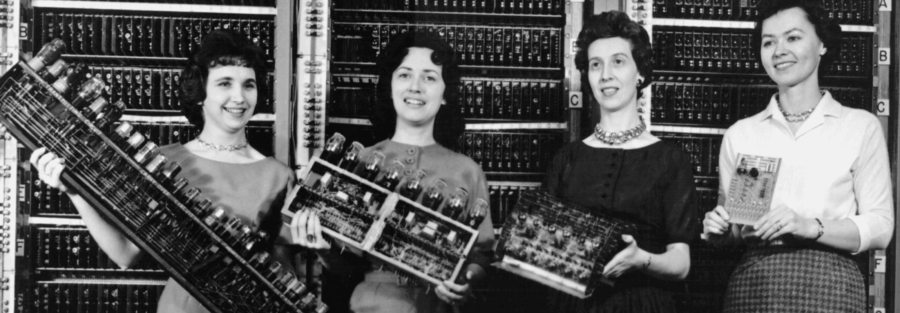These are the words the women of ML cube read when doing a research on the gender gap, in the field of computer science.
Here are a few considerations that came up, after reading the famous NY Times article:
Programming is a woman’s job
If we were in the 50’s these words would have not sounded strange to you: at that time, women constituted, in fact, the majority of programmers.
While their contributions have often been overlooked and undervalued, women played an instrumental role in the early days when coding and computers were unknown concept.
Going up
Over the course of history, the remarkable journey of women in the field of tech has been one of resilience, innovation, and groundbreaking achievements.
In the 40’s and 50’s coding was considered a job for detail-oriented, meticulous people, so the stereotypes played in women’s favor.
As Mary Allen Wilkes, one of the first software pioneers, said, they were tackling “large, complicated logic puzzles.”
Far from being an easy job, women had to deal with vacuum tubes and flow charts, writing code on pieces of paper that would be later translated to holes on a punch card.
The first people who discovered the concept of debugging and placing breakpoints, realizing that software rarely worked flawlessly from the first time were, in fact, six women working on the ENIAC project for computing missile trajectories, the article informs us.
What is impressive, is that their capacities also worked to protect them from other prejudice– at least in the world of machines;
as Arlene Gwendolyn Lee put it: “The computer didn’t care that I was a woman or that I was black. Most women had it much harder”.
And going down
If we want to pinpoint a moment when this trend went into reverse and women began to be forced out of programming , this would be aligned with the advent of personal computers in the 80s’.
Using a computer became a typical father-son activity, while girls were usually not included.
So, while many boys arrived at college with a considerably high number of hours spent on a pc and possibly some basic coding experience, girls didn’t.
At the same time, the increase in the request for coding courses led universities to use admission tests to limit the number of students and, since most of the women had no prior experience in programming, they were inevitably cut out.
Also, the idea of the coder as a person with an antisocial, geek personality diffused by Hollywood movies inevitably influenced the society, as well as the companies’ hiring process.
Now that the coder was commonly identified as a ‘nerd’ man, women’s attraction to coding went into decline.
In the decades that followed, the trend kept going downwards, halving from the 37.1% of 1984 to 19% in 2017 [the article refers to the US].
And up again!
Despite the challenges, there is hope for progress.
Efforts have been made by institutions like Carnegie Mellon to address the gender imbalance in computer science programs, resulting in a significant increase in the number of women pursuing tech careers. Moreover, a broader cultural shift is underway, with more women expressing interest in coding, aided by online coding schools and meetup groups.
Young women like Jana El Khoury, Nicole Gentile and Chiara Scrimieri are determined to pursue careers in tech, challenging stereotypes and demonstrating their capabilities.


